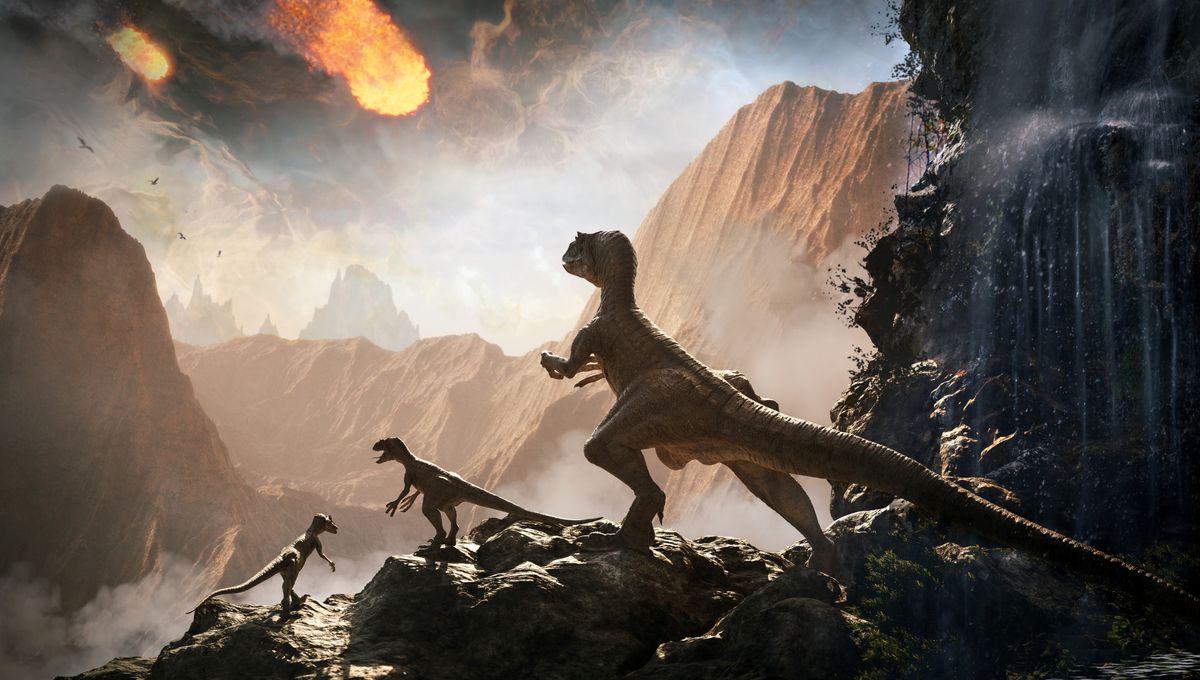
A massive release of sulfur has been largely blamed for the dramatic cooling that followed Chicxulub’s crash landing, but did it really happen like we thought it did? A new study is raising questions about the long-held belief that an eruption of sulfur (among other things) triggered a severe and lasting “impact winter”, arguing that we may have overestimated how much was really released.
Chicxulub sucker-punched the planet around 66 million years ago, creating a 200-kilometer-wide (124.3-mile) impact crater in the Yucatán Peninsula, in what we now call Mexico. What followed killed off 75 percent of species on Earth, including the dinosaurs, but what was the deadly catalyst?
When a giant space rock hits the Earth like this, it sends up a cloud of dust, soot, and other earthly things into the atmosphere, creating what’s called an impact winter as extreme darkness and cold settles in. Plants fail to photosynthesize and animals fail to thrive, which in the case of Chicxulub led to a complete reshuffling of the order of animals.
Within that destructive dust cloud, scientists had picked out a particularly guilty party in the demise of so much life on Earth: eggy old sulfur. Exactly how much sulfur got released has been up for debate, with estimates ranging quite drastically because, simply, too many questions remained unanswered. Were there lots of rocks packed with sulfur at the impact site? Exactly how fast and at what angle did the asteroid hit? And what could that mean for the subsequent spread of sulfur?
Using drill cores taken from impact rocks at the Chicxulub site in Mexico, a new study has become the first-ever to empirically estimate how much sulfur was really release when the asteroid hit. Their conclusions? That we’ve been massively overestimating.
“Instead of focusing on the impact event itself, we focused on the aftermath of the impact,” explained chemist Katerina Rodiouchkina in a statement. “We first analyzed the sulfur fingerprint of the rocks within the crater region that were the source of sulfate aerosols released into the atmosphere.”
“These sulfate aerosols distributed globally and were eventually deposited from the atmosphere back onto the Earth’s surface in the months to years after impact. The sulfur was deposited around the K-Pg boundary layer in sedimentary profiles all over the world. We used the corresponding change in the isotopic composition of sulfur to distinguish impact-related sulfur from natural sources and the total amount of sulfur released was calculated through mass balance.”
By the team’s workings, previous estimates have been overshooting with estimates five times higher than what their investigation revealed. They reckon that a total of 67 ± 39 billion tons of sulfur was released, suggesting it was followed by a milder impact winter than previously believed.
Temperatures would have still declined but not so drastically, and the climate would’ve bounced back to near normal much sooner. This pattern of flux, they suggest, could account for why despite all the drama, a quarter of life on Earth still survived the cataclysmic event.
The study is published in the journal Nature Communications.
Source Link: What Killed The Dinosaurs? New Study Suggests We’ve Got One Key Element Wrong